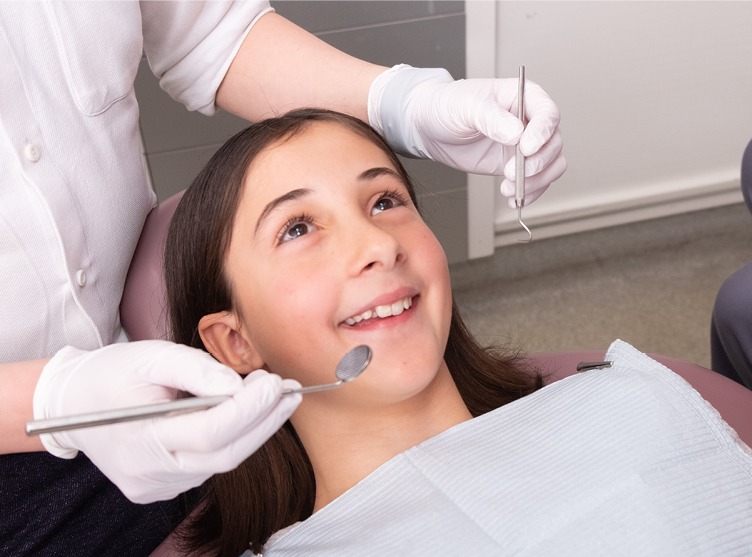How Legacy Orthodontics can Save You Time, Stress, and Money.
Table of ContentsThe 15-Second Trick For Legacy OrthodonticsSome Known Facts About Legacy Orthodontics.Little Known Questions About Legacy Orthodontics.Legacy Orthodontics Can Be Fun For AnyoneLegacy Orthodontics for Beginners
In addition, we use adjustable therapy timetables, flexible repayment options and an enjoyable, enjoyable experience.An orthodontist is a dental expert educated to detect, prevent, and treat teeth and jaw abnormalities. Orthodontists work with people of all ages, from children to adults.
Malocclusion, or misaligned teeth, can bring about dental problems, including tooth degeneration, periodontal disease, and difficult or agonizing chewing. Yet not everybody is birthed with straight teeth. If you have a bad bite or big areas in between your teeth, you may desire to get in touch with a dentist focusing on orthodontic treatment.
The Only Guide for Legacy Orthodontics
( Picture Debt: DigitalVision/Getty Images) Orthodontists make use of dealt with and detachable dental tools, like braces, retainers, and bands, to transform the position of teeth in your mouth. Orthodontic treatment is for dental irregularities, consisting of: Jagged teethBite problems, like an overbite or an underbiteCrowded teeth or teeth that are too much apartJaw misalignmentThe objective of orthodontic treatment is to enhance your bite.
A healthy bite ensures you can consume, chew, and speak appropriately. While you might consider orthodontists as primarily for children or teens who require dental braces, they can correct oral problems at any type of age. Orthodontists go to college, dental college, and orthodontic college. After graduation, they invest 2 or 3 years in an orthodontic residency program.
, but not all dental professionals are orthodontists. They focus on two areas: Exactly how to correctly and securely move teeth How to correctly direct development in the teeth, jaw, and faceOnce an orthodontist has actually finished training, they have the alternative to become board certified.
What Does Legacy Orthodontics Do?
Malocclusion leads to tooth overcrowding, a misshapen jaw, or uneven bite patterns. Malocclusion is usually treated with: Your orthodontist affixes steel, ceramic, or plastic square bonds to your teeth.
If you have only minor malocclusion, you may have the ability to use clear dental braces, called aligners, as opposed to conventional dental braces (https://leetcode.com/u/legacyortho/). Some people require a headwear to help move teeth into line with stress from outside the mouth. After dental braces or aligners, you'll need to wear a retainer. A retainer is a custom-made tool that maintains your teeth in location.
They're most usually utilized on kids. They can create extra area in the mouth without needing to pull teeth. If you have a significant underbite or overbite, you could need orthognathic surgical procedure (additionally called orthodontic surgical procedure) to extend or reduce your jaw. Orthodontists use cables, medical screws, or plates to sustain your jaw bone.
You may need to see an orthodontist if you have: Crowding or not enough space for all of your teethOverbite, when your top teeth come over your base teethUnderbite, when your bottom teeth are as well much forwardSpacing or concerns with gapsCrossbite, which is when your upper teeth fit behind your bottom teeth when your mouth is closedOpen bite or a vertical gap between your front bottom and upper teethMisplaced midline, when the facility of your bottom and upper teeth don't line up Remedying an oral malocclusion can: Make biting, eating, and talking easierImprove the balance of our face and your general appearanceEase pain from temporomandibular joint disordersSeparate your teeth and make them easier to cleanse, assisting stop tooth degeneration or cavities It's frequently a dental practitioner who initially notices misaligned teeth during a routine exam.
All about Legacy Orthodontics

Throughout your first orthodontic assessment, you'll likely have: A dental examPhotos taken of your face and smileDental X-raysPanoramic (360 level) X-rays of your face and headImpressions to produce molds of your teethThese examinations will assist your orthodontist understand how to wage your treatment. leesburg braces. An orthodontist is a dental professional who's had training to treat your teeth and jaw
An orthodontist is concentrated on your bite, so something like a damaged tooth would certainly be managed by a dental professional. Orthodontists are concentrated on your bite, or the means your teeth fit together, and the straightness of your teeth.
Ever before wondered just how stars constantly appear to have completely straightened teeth? Orthodontists are dental professionals who concentrate on dealing with irregularities in the teeth and jaws.
The 8-Second Trick For Legacy Orthodontics

, orthodontists have a varied toolkit at their disposal. These reliable dental braces utilize a system of brackets adhered to the teeth and attached by wires.
Clear aligners, like Invisalign, are a prominent alternative for clients looking for an extra discreet therapy alternative. These removable trays are custom-made to progressively move the teeth's setting. Headwear may be utilized along with braces or aligners to apply extra targeted forces, particularly for fixing jaw disparities. In situations of slim jaws, palatal expanders can be best site used to develop space for proper tooth positioning.